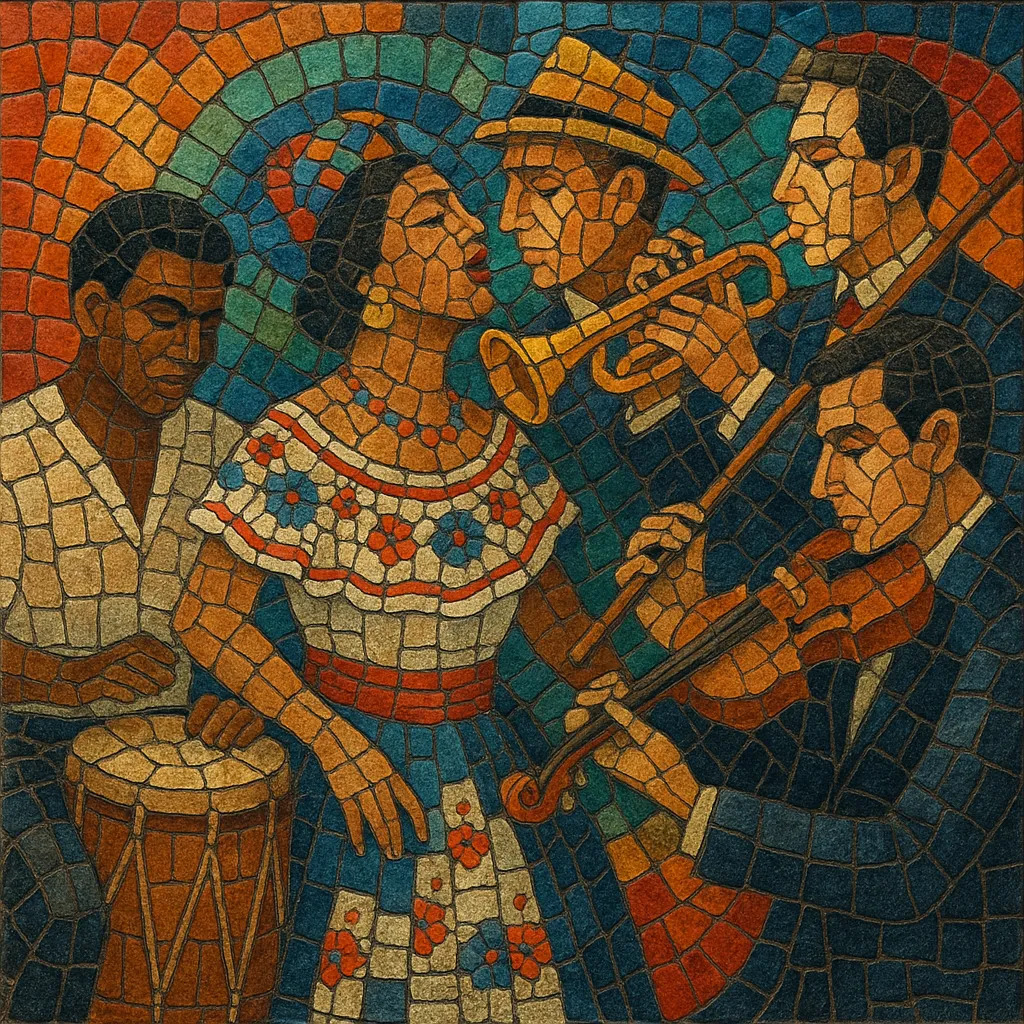Tamborera is a Panamanian popular style that blends the Afro-Panamanian drum-driven tamborito tradition with the romantic, orchestrated feel of Cuban bolero and danzón.
Built around lively hand-drum patterns and call-and-response singing, tamborera places those folk elements inside an urban dance‑band or big‑band setting with horns, strings, and polished arrangements. The result is a festive yet elegant sound: simultaneously suitable for patriotic celebrations and ballroom dancing, and just as comfortable carrying romantic lyrics as it is celebrating local customs and pride.
Tamborera emerged in Panama as arrangers and composers sought to elevate and popularize the country’s tamborito drum-and-chorus tradition by fusing it with cosmopolitan Latin ballroom idioms. Figures such as Ricardo Fábrega (composer) and bandleaders/arrangers like Avelino Muñoz began crafting pieces that retained the characteristic hand‑drum drive and communal responses of tamborito, but set them against bolero/danzón harmonies and big‑band textures.
Through hotel orchestras, radio, and national festivities, tamborera became a musical emblem of Panamanian identity. Urban dance bands incorporated trumpets, trombones, saxophones, and strings while preserving the tamborito’s layered drum patterns and call‑and‑response refrains. The style’s balance of sophistication and folkloric energy allowed it to circulate widely in civic ceremonies, theaters, and dance halls.
Tamborera typically features a bright, danceable pulse (often perceived as a 2/4 or 4/4 groove with cross‑rhythmic drive), melodic lines influenced by bolero lyricism, and sectional arrangements (introductions, interludes, and shout‑choruses) borrowed from big‑band practice. Lyrically, songs range from romantic themes to patriotic and costumbrista topics.
While later Panamanian popular currents (e.g., típico orchestras and broader tropical fusions) diversified the scene, tamborera remains a symbolic genre—performed by orchestras, folkloric ensembles, and contemporary vocalists. Its orchestrated approach to integrating Afro‑Panamanian percussion helped shape how Panamanian music presents its folk roots in modern, urban contexts.


